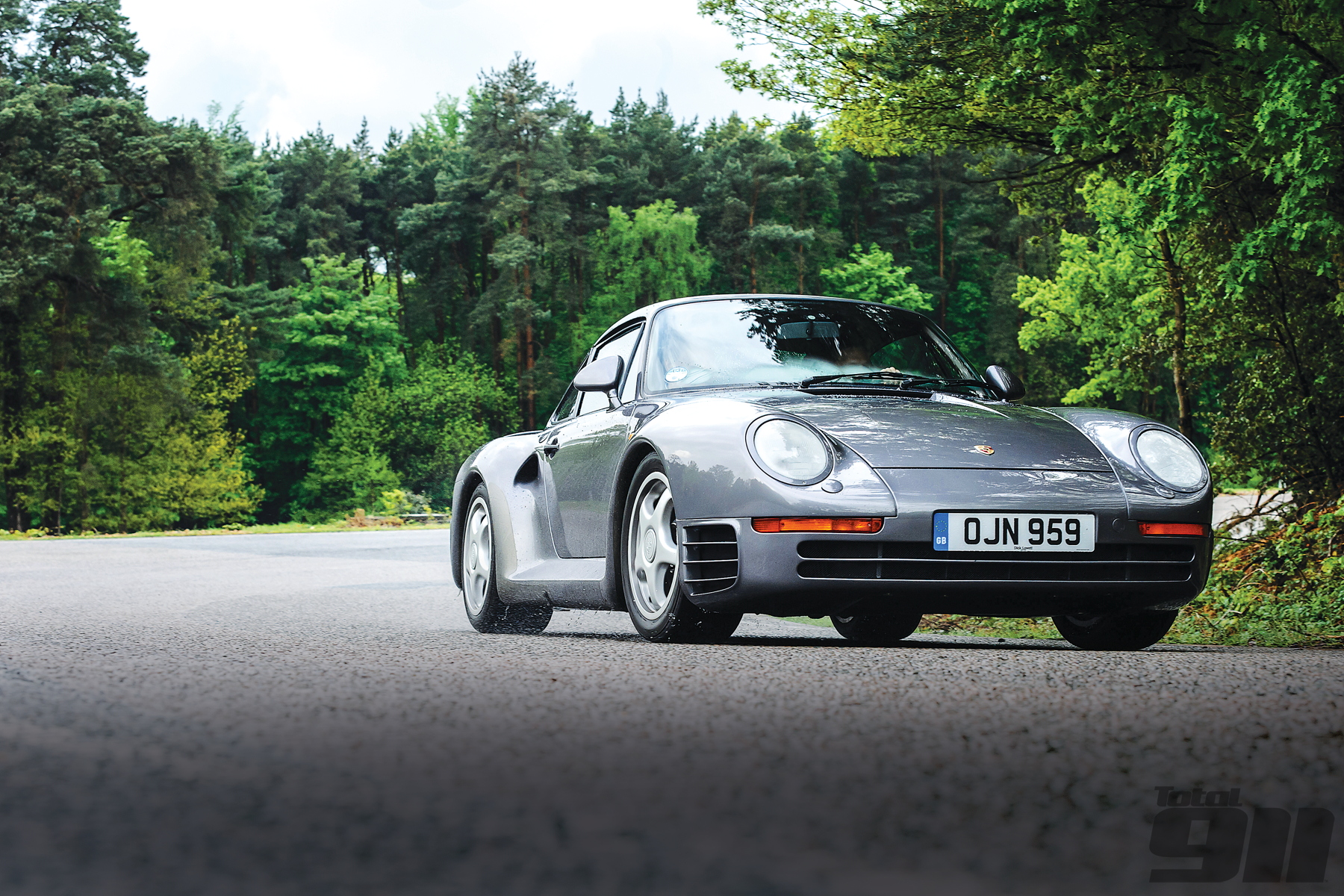Porsche 959 driven: Hyper 911
It’s hard to believe the Porsche 959 is three decades old. Endowed with truly effortless performance and elegantly styled, it’s the original Porsche supercar (if you think modest of the 930 Turbo), a pioneering machine that has captured the imaginations of car enthusiasts across the globe ever since – and, as we shall find out, mapped significant chapters of the 911’s own evolutionary journey.
Although there is conjecture to the contrary, the 959 is a close relation of the 911 at the very least. With a flat-six engine positioned past the rear axle, its layout is, crucially, the same, and even a quick look around the car will uncover various styling cues from Neunelfers of the time and thereafter.
Consider it a Porsche 911 on steroids, then; a relative heavyweight champion of international box office appeal, with only Ferrari’s F40 able to share ring space with Weissach’s seminal creation.

The 959 has, like its uncompromising counterpart from Maranello, gone on to define the entire automotive generation of which it hails from, yet for Porsche enthusiasts the story of the car’s beginning is just as captivating.
Originally displayed as a ‘Gruppe B’ concept on its stand at the Frankfurt Motor Show in 1983, Porsche’s new creation was conceived with racing intentions in mind for the 1984 season. However, CEO Peter Schutz and head of Research and Development, Professor Helmuth Bott, had one eye on the future of the company’s sports cars too.
Gruppe B rules stipulated at least 200 examples had to be produced for homologation purposes (though interestingly, the car could be raced prior to series production) and Bott was of the principle that if 200 cars had to be made, why not make a thousand? Thus, development of the recently-saved Neunelfer was thrust into the limelight.

One of the first new aspects of development was all-wheel-drive. Schutz had watched the Audi Quattro, brainchild of one-time Porsche supremo Ferdinand Piëch, dominate rallies at international level, and early testing of prototypes in the desert encouraged Bott and his team of engineers to explore this further.
A competition concept was duly trialled in the 1984 Paris-Dakar rally, the car running under the internal designation code Type 953. Some trial it was, too: the 953 finished the 12,000-kilometre race in first place, piloted by René Metge and Dominique Lemoyne.
However, ever-evolving technologies meant the car was not ready for production, as hoped, by late 1984, or even 1985. The car was clearly becoming quite complex: Bott wanted to create a Porsche for the next ten years, and development of the 959 could never stay in-house.
To read our appraisal of the Porsche 959 at 30, pick up Total 911 issue 142 in store today. Alternatively, you can order your copy online for home delivery, or download it straight to your digital device now.


Comments (0)